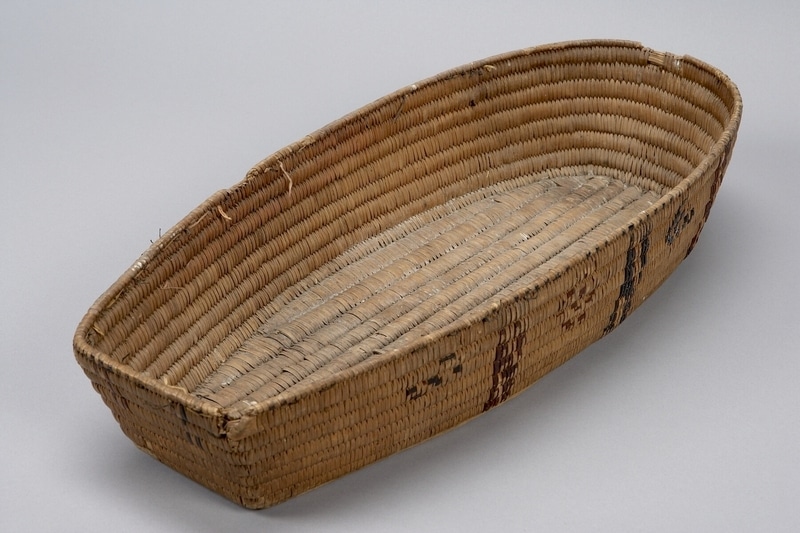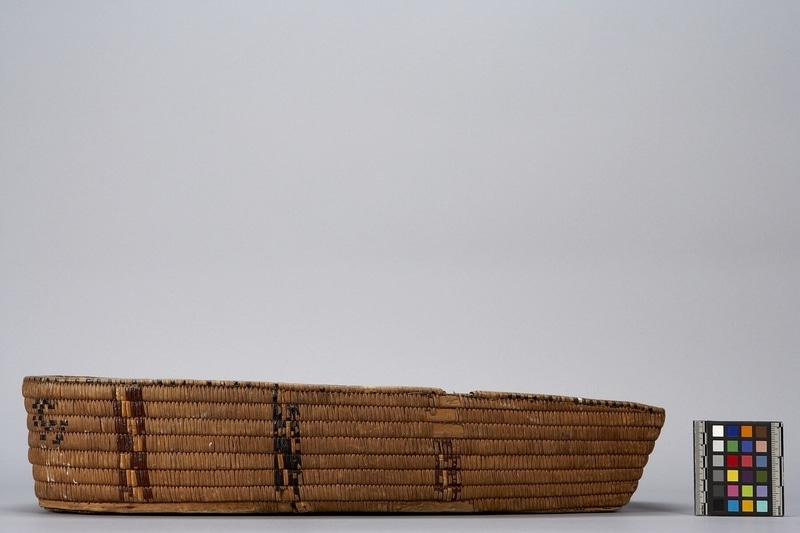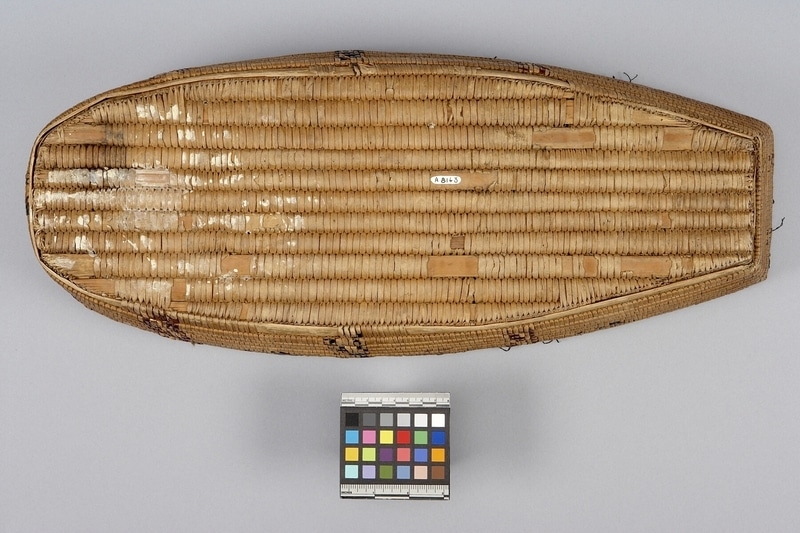Baby Carrier Item Number: A8143 from the MOA: University of British Columbia



Description
Basketry tan cradle of simple interlocking coiled work (bifurcated stitches) with parallel slat base construction and splint overcast rim construction. Partial beading and imbrication. The sides feature a series of vertical bands (seven stitches wide) in red with cat-tail grass alternating with black-dyed bark with cat-tail. Between these vertical bands are small beaded figures per section in alternate red and black cherry bark (one side only). The end has two patterns, one in red and the other in black. The rim is beaded (1:1 ratio) in black.
History Of Use
Basketry cradles are thought to be of relatively recent origin by some basketry experts, such as Andrea Laforet of the Canadian Museum of Civilization. They may first have appeared in the late 1800s or early 1900s. In the early to mid 20th Century basket makers began expanding their reportoire of shapes and styles for collectors, and many new forms were seen including tea cups, tables, suitcases, and hand bags to name a few.
Cultural Context
basketry; children
Iconographic Meaning
The checkerboard pattern is known as "cluster of flies".
Item History
- Made in British Columbia, Canada
- Collected in Duncan, British Columbia, Canada between 1950 and 1962
- Owned by Edith Bevan Cross before July 30, 1962
- Received from Edith Bevan Cross (Seller) and H. R. MacMillan (Funding source) on July 30, 1962
What
- Name
- Baby Carrier
- Identification Number
- A8143
- Type of Item
- carrier
- Material
- cedar root, cherry bark, dye and cat-tail grass ?
- Manufacturing Technique
- coiled and imbricated
- Overall
- height 12.0 cm, width 23.7 cm, depth 57.5 cm
Who
- Culture
- Coast Salish: Quwutsun'
- Previous Owner
- Edith Bevan Cross
- Received from
- Edith Bevan Cross (Seller) and H. R. MacMillan (Funding source)
Where
- Holding Institution
- MOA: University of British Columbia
- Made in
- British Columbia, Canada
- Collected in
- Duncan, British Columbia, Canada
When
- Collection Date
- between 1950 and 1962
- Ownership Date
- before July 30, 1962
- Acquisition Date
- on July 30, 1962
Other
- Item Classes
- basketry
- Condition
- fair
- Accession Number
- 0081/0119 a